Into the Heart of Africa: Part 3
They call it the “Eighth Wonder of the World,” and standing on the rim of Ngorongoro Crater that foggy Monday morning, I finally understood why.
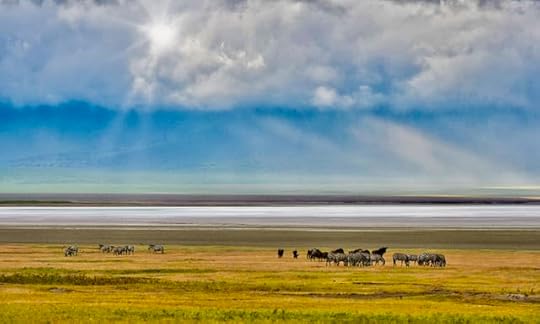
Twelve miles across and 2,000 feet deep, the crater yawned before us like the curvature of the Earth itself—a collapsed volcanic caldera that had been nature’s most spectacular accident some 2.5 million years ago. When that ancient volcano exploded and collapsed inward, it created what would become the world’s largest intact, unfilled volcanic crater. What we were looking down into wasn’t just a geological marvel—it was Africa’s Garden of Eden, a wildlife theater unlike anywhere else on Earth.
Descent into Eden“Light rain and very foggy at top of crater,” I wrote in my journal that morning. But James assured us it would be clear once we got down into the crater—he was right as usual.
James had become more than our guide; he was our translator for this ancient landscape, our David Attenborough with an infectious smile and encyclopedic knowledge. As we descended the winding road into the crater, the fog lifted like a theater curtain, revealing the stage where one of nature’s greatest dramas plays out daily.
At 8 AM sharp, we got our first glimpse of the crater’s most magnificent residents.
The Greatest Show on EarthA pride of lions lay in the grass—two females and two males, one older, one younger. At first, they simply lounged, occasionally lifting their heads with that bored royal indifference that only big cats can master. Then, as if someone had called “Action!” they all stood up and began walking directly toward our Land Cruiser.
What happened next would later inspire one of the most intense scenes in Blood Oath.
The lions came right onto the road in front of our jeep and walked along it for fifty feet before crossing into the grass beside us. One female lay down on the roadside, no more than five feet away. I could have reached out and touched her—though that would have been spectacularly stupid and dramatically final.
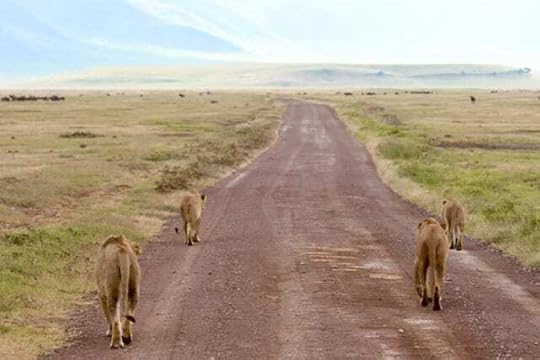
But the real show was just beginning.
Hunting Lessons from the MastersThe field the lions had crossed into was full of wildebeest, and we were about to witness what James called “better than David Attenborough”—a textbook lion hunt in real time, complete with our guide’s expert narration.
The two females began stalking the herd with surgical precision. One positioned herself visibly to the herd, staying in plain sight to distract them. Meanwhile, the second female circled behind, using the classic pincer movement that has made lions apex predators for millennia. As the visible female drew the wildebeest’s attention, they began moving away from her—directly toward the hidden huntress.
Then the two males joined the operation, stalking along the flanks to cut off escape routes.
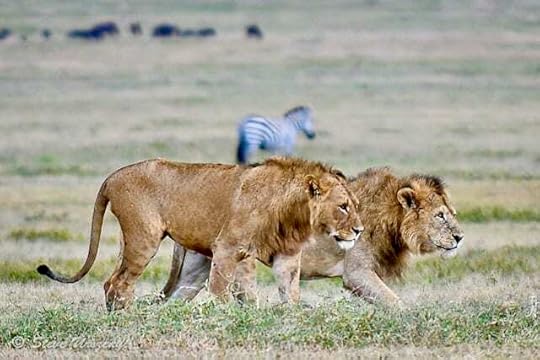
For thirty to forty minutes, we watched this coordinated tactical operation unfold. The lions demonstrated patience, intelligence, and teamwork that would impress any military strategist. In the end, they chose not to attack—perhaps the conditions weren’t perfect, or they simply weren’t hungry enough. But we had witnessed the blueprint of successful predation, and it was magnificent.
“We were so excited to see all of this,” I noted, “and it was only 8 AM!”
A Crater Full of WondersAs we continued our game drive, the crater revealed why it houses over 25,000 animals in just 100 square miles. Thousands of pink flamingos carpeted the edge of Lake Magadi like a living pink shoreline. We saw herd after herd of cape buffalo, wildebeest, zebra, and gazelle—all grazing together in the kind of abundance that existed across Africa before human interference.
The hippos provided comic relief and genuine surprise. We watched one galloping across the plain back to a small lake, moving at a speed we never imagined possible for such massive creatures. “We never realized hippos could move so fast,” I wrote, still amazed by the sight.
Most precious of all, we spotted four black rhinos—mere black dots through binoculars at about two kilometers distance, but incredibly significant. These are among only nineteen black rhinos remaining in the park, a critically endangered species clinging to survival in one of their last strongholds.
Nature’s Perfect TheaterWhat makes Ngorongoro unique isn’t just the wildlife density—it’s the setting. The crater walls rise 2,000 feet on all sides, creating a natural amphitheater where every drama of African wildlife plays out within perfect viewing distance. Unlike the endless plains of the Serengeti, where animals can disappear into vastness, the crater keeps its stars center stage.
In the afternoon, we encountered another lion pride lounging beside the road—four females and two males. One alpha female remained alert, carefully watching a mixed herd of wildebeest, cape buffalo, and zebra. James predicted they would attack that night, when darkness would give them the ultimate advantage.
The Inspiration Takes ShapeAs I absorbed these experiences, I began to understand what would drive Blood Oath’s most emotional scenes. The crater’s confined nature—beautiful but inescapable—would mirror Alex Martel’s psychological state when her father is kidnapped. Like the wildlife in the crater, she would be trapped in a contained environment where every move is visible, every decision carries life-or-death consequences.
The lions’ hunting techniques—patience, coordination, tactical thinking—would inform how Alex approaches her own desperate mission. The way the crater’s beauty masked constant predation would reflect how even paradise can turn deadly without warning.
Most importantly, the crater taught me about sanctuary. Here was a place where endangered species found refuge, where ancient rhythms continued despite the chaos of the outside world. In Blood Oath, Alex’s relationship with her father represents that same kind of sanctuary—a safe space that becomes worth dying to protect.
A Theater of LightBy afternoon, the crater had transformed completely. The morning rim, shrouded in clouds and fog, now blazed with sunshine. Rays broke through in cathedral shafts, illuminating the grasslands and creating what I called “beautiful visual effects” that made the whole landscape seem blessed.
We kept saying throughout that day: “How can it get any better than this!”
As it turned out, it couldn’t. But it could get more dangerous, more personal, and more emotionally complex—which is exactly what happens in Blood Oath when paradise becomes a battlefield.
What’s ComingNext Thursday, we’ll meet the Maasai—the encounter with Sanka and his family that opened my eyes to both ancient wisdom and modern injustice, shaping the cultural heart of Blood Oath’s story. We’ll witness traditional hunting dances, learn how to build a home from cow dung, and discover why some conflicts span generations.
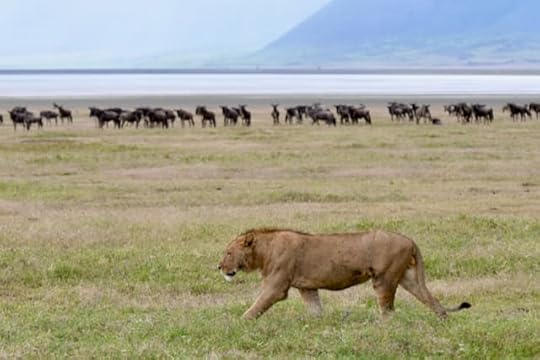
But first, let me leave you with the image that still gives me chills: those lions walking within touching distance of our vehicle, completely relaxed in their absolute power. In that moment, we were visitors in their kingdom, subject to rules we barely understood.
In Blood Oath, Alex Martel learns the same lesson in the most painful way possible.
Asante sana for continuing this journey. The kings await your visit to their crater.
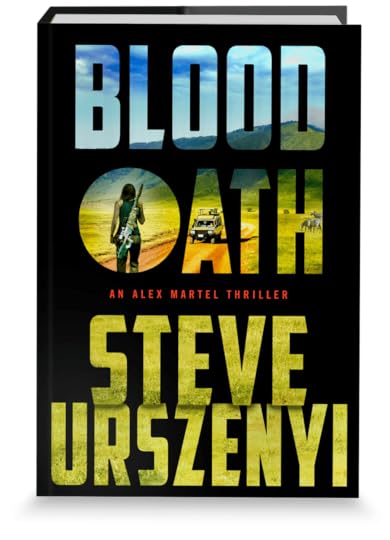
Blood Oath releases November 18, 2025. Preorder your copy today and experience the thriller born from the world’s most magnificent wildlife theater.
🇺🇸 Amazon US: Order on Amazon US
🇨🇦 Amazon Canada: Order on Amazon Canada
📖 Indigo Books: Order on Indigo Books
🏢 Barnes & Noble: Order on Barnes & Noble
📚 Novel Spot (Local Indie): Order at Novel Spot
💪 Why pre-order matters: Your pre-order helps boost the book’s visibility, supports independent bookstores, and ensures you get your copy on release day - November 18th!
👥 Help spread the word! Share this with fellow thriller fans who love heart-pounding Alex Martel adventures. Every pre-order makes a difference for authors like me!
🎯 Don’t wait - secure your hardcover copy now and be among the first to dive into Alex’s most dangerous mission yet!
#BloodOath #PreOrderNow #ThrillerBooks #AlexMartel



